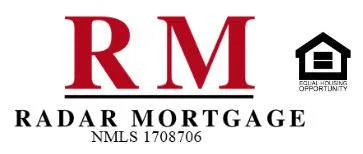
real estate & finance news
Let's Get You Approved!
Lorem Ipsum is simply dummy text of the printing and typesetting industry. Lorem Ipsum has been the industry's standard dummy text ever since the 1500s, when an unknown printer took a galley of type and scrambled it to make a type specimen book. It has survived not only five centuries.
Lorem Ipsum is simply dummy text of the printing and typesetting industry. Lorem Ipsum has been the industry's standard dummy text ever since the 1500s, when an unknown printer took a galley of type and scrambled it to make a type specimen book. It has survived not only five centuries.

Fannie Mae's New Investor Guidelines
Fannie Mae's New 95% LTV Guidelines: A Golden Opportunity for Aspiring Real Estate Investors
The Big Change
The real estate investment landscape has witnessed a transformative change with Fannie Mae's recent update to its lending guidelines. Fannie Mae has increased the Loan-To-Value (LTV) ratio to 95% for 2-4 unit properties. This strategic shift is particularly impactful for first-time real estate investors, offering a more accessible pathway into property investment. Let's explore how these new guidelines can catalyze your journey into real estate investment.
Understanding the Enhanced LTV Ratios
The increase in LTV ratios from 85% to 95% for two-unit properties and from 75% to 95% for three or four-unit properties is a significant leap. This adjustment means that as a new investor, you can now finance up to 95% of your property's value. The implication? The initial down payment requirement drops to a mere 5%, making it considerably easier to acquire multi-unit properties.
Benefits for Owner-Occupied and Investment Properties
These revised guidelines encompass both owner-occupied and investment properties. For owner-occupied properties, where the investor resides in one of the units, the risk is perceived as lower, leading to more favorable loan terms. Conversely, investment properties, which are not the primary residence of the borrower, have a slightly lower maximum LTV of 85% for 2-unit properties and 75% for 3-4 unit properties. This distinction is crucial in understanding the financing landscape for different types of property investments.
Refinancing Advantages
The updated guidelines also significantly benefit those looking to refinance. The ability to refinance up to 95% LTV for rate and term (No Cash Out) refinances on two to four-unit homes is a substantial increase from the previous cap of 85%. This change opens up new avenues for investors to restructure their existing mortgages under more favorable terms. However, it's important to note that these new refinancing options do not apply to high-balance or manually underwritten loans.
Down Payment and Property Eligibility Simplified
One of the most daunting aspects of real estate investment is the substantial initial capital outlay. The new guidelines address this challenge head-on by significantly lowering the down payment requirements. Furthermore, Fannie Mae has updated its property eligibility matrix to align with these changes, simplifying the process for determining if a property qualifies for financing under the new LTV ratios.
Leveraging Rental Income
A unique and advantageous aspect of the new guidelines is the inclusion of potential rental income as part of the qualified income for loan applications. This approach is particularly beneficial for first-time investors, as it allows the projected income from renting out units in the property to bolster their loan application. This inclusion can significantly enhance your borrowing capacity, making it easier to qualify for a loan.
ADUs: Expanding Investment Opportunities
Accessory Dwelling Units (ADUs) represent an additional revenue stream for property owners. The updated guidelines provide specific financing options for ADUs, which must meet certain criteria, including having independent entrances and facilities, and adhering to local zoning and building codes. This opens up new possibilities for maximizing the income potential of your property investment.
Navigating the New Landscape
As a first-time investor, navigating these new guidelines can seem daunting. However, this change by Fannie Mae is designed to make property investment more attainable. By reducing the financial barriers to entry, these guidelines offer a more inclusive opportunity for individuals looking to diversify their investment portfolio through real estate.
Wrap Up
The revised guidelines by Fannie Mae mark a significant milestone in making real estate investment more accessible, especially for those venturing into this arena for the first time. By lowering the down payment threshold and offering more flexible financing options, Fannie Mae is not just facilitating property acquisition but is also empowering a new generation of investors. As you embark on this exciting journey, it's crucial to engage with experienced lenders and real estate professionals who can provide guidance tailored to these new norms. With the right approach and strategic planning, these changes can serve as a springboard to launch or expand your real estate investment endeavors, setting the stage for long-term financial success and stability in the ever-evolving world of real estate.

NMLS 375548
“Every Client Deserves The Best Terms & Service Possible.”
Lee Walsh,
Founder Radar Mortgage, LLC
Our goal is simply to be the trusted real estate finance advisors of our community.
© Copyright 2025. Radar Mortgage, LLC. All rights reserved. Visit the Nationwide Mortgage Licensing System NMLS 1708706
Radar Mortgage, LLC makes residential, commercial, and business purpose loans. Commercial and Business loans are for investment purposes only and not for personal, family, or household use. Loan product availability may be limited or not available in certain states. This is not a commitment to lend. All loans are subject to borrower underwriting and credit approval, in Radar Mortgage, LLC’s sole and absolute discretion. Other restrictions apply.
Important Disclosures



